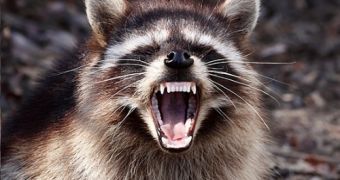Although most people tend to regard raccoons as rather cute fury animals, which can only be blamed for coming into our backyards late at night and going through our trash, it seems that this species is in fact one that poses significant threats both for public health and for other animals who share their natural habitats with it.
Apparently, raccoons and native European species do not really see eye to eye, probably because raccoons were not even supposed to inhabit these parts of the world in the first place. Thus, they are an invasive species brought here by people either as game, or to provide for the developing fur industry.
Moreover, there are some who decided to keep them as pets, so it comes as no surprise that their overall headcount pretty much boomed on this continent sooner than one might expect.
One major downside to having these many raccoons around is that, according to new research, their taking over considerable portions of land in Europe, and especially in Spain, can be linked to a potential spread of infectious and parasitic diseases such as rabies.
Given the fact that both humans and animals are quite vulnerable to these conditions, the case is now made that due consideration must be given to how European natural ecosystems and public health will be affected by this invasive species.
Quoted on the Alpha Galileo Foundation website, Beatriz Beltrán-Beck, one of the environmental scientists who looked into this issue, argues that, “Due to its rapid expansion and the long list of illnesses that it may carry, it poses a health risk that we must bear in mind.”
However, “More epidemiological studies are necessary on the current health situation and the implementation of measures that limit the possible impact of invading raccoons.”
As researchers explain, this newly identified threat to European public health and to native species stands as proof that our planet's biodiversity map was designed to look in a certain way for some very precise purposes, and that relocating animals without first assessing the impact they will have on their new environments is bound to cause some serious problems.

 14 DAY TRIAL //
14 DAY TRIAL //